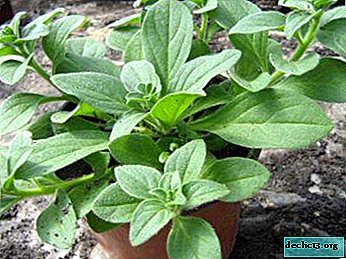Do-it-yourself foam concrete
Many owners of future homes are concerned about the issue of saving funds. Foam blocks are very popular because of the sufficient simplicity of the construction work and their characteristics. The cost of finished blocks is high, but if you want, you can make them yourself. Then, in addition to saving, you can get a warm, fireproof house. Foam concrete - cellular concrete, in which a porous structure was formed using a foaming agent during the manufacturing process. A large number of evenly spaced pores makes it easy. Typically, the dimensions of the blocks are 60 cm * 60 cm * 25 cm and weigh 18 kg. The big advantage of home-made is getting blocks of any size.
Do-it-yourself foam concrete production: manufacturing technology
There are three main stages of production:
- mixture preparation (cement and sand);
- preparing a solution to obtain a foam;
- production of foam concrete.
Materials and devices for the production of foam concrete:
- concrete mixer;
- concrete pouring mold;
- foam generator;
- sand;
- cement;
- hardener;
- foaming agent;
- the room in which the finished blocks will be dried.
The quality of the material depends on the ratio of the number of components in the solution. Density is from 0.2 to 1.5 t / m3. The average density with a cement to sand ratio of 1: 1. For 1 kg. cement need 3-4 grams of foaming agent.
Stages of manufacturing foam concrete
Preparation of the mixture for foam concrete. The mixture is made of sand and cement, as for ordinary concrete. Cement brand is better to take M400 or M500 - Portland cement. Sand is fine, without clay impurities, which will interfere with the high-quality combination of materials. The size modulus for sand is up to two units. Water can be used tap water, without impurities of acids and salt. Preparation of a solution to obtain a foaming agent. Foaming agent must be slowly added to the prepared cement-sand mixture. It is best to use Arecom-4 type on a synthetic basis. The composition of the foaming agent for self-production includes:
- caustic soda 150 gr;
- rosin 1 kg;
- wood glue 60 gr.
Everything is well crushed, mixed, subjected to heating and then mixed to a homogeneous mass. Such a foaming agent production process can only be used with a foam generator. Combining the previously obtained mixture with water, a working solution of a foaming agent is obtained. When mixing two mixtures, a ready-made foam concrete solution is obtained.
Do-it-yourself foam concrete blocks
Recommendations for the production of foam concrete:
- Use of a concrete mixer for industrial production.
- Molds for blocks can be made of plywood strictly observing the geometric dimensions to avoid errors.
- High-grade cement, river sand in a ratio of 1: 3 are poured into the concrete mixer, mixed thoroughly, water and a foaming agent are gradually added. Having mixed the mixture well, you can add a hardener. After 1-2 minutes, the solution is ready.
- The solution is poured into prelubricated forms. You can cover the plywood form with polyethylene. The temperature for drying is taken 50 - 60 degrees. It dries for about two days. After drying, the molds are freed and poured with a new solution.
- The blocks are stacked on pallets and delivered to the construction site.
- Concrete mortar can be used for the manufacture of blocks or in monolithic construction, in which case concrete is poured into the formwork.
- To accelerate the hardening, various accelerators can be used. The most popular is calcium chloride, added to a solution of 1-2% of the total volume of the mixture.
Mold fill
To obtain blocks, concrete is poured into a mold or cassette. For easy release of the form from the block, it is lubricated not with oil, but with special substances without adding oil. There are two technologies for making blocks: injection and cutting. In the first method, the concrete mixture is poured into a mold of metal, which serves as a snap for the block. In this state, it dries, gains the required strength, and the finished product is removed from the mold. The height of the cassettes is usually 60 cm. The disadvantages of this technology may be:
- deviation from geometric dimensions. This is due to the deformation of the thin metal from which the molds are made. Increasing the thickness of the metal leads to an improvement in the quality of the blocks;
- if you need different sizes, you need additional equipment, which increases the cost of manufacturing blocks;
- at one end of the block, a “hump” may occur;
- when stripping the cassette, due to the insufficient strength of the foam concrete, blocks can be damaged. The unit may be damaged due to poor lubrication of the cartridge.
Advantage - there is no need to purchase expensive equipment.
Cutting technology
- a large mold is cast;
- cutting to the desired size.
Benefits:
- all sizes of the desired geometry;
- no chips and roughnesses of corners and edges, which helps to reduce the cost of wall decoration;
- good adhesion and appearance of the blocks;
- the absence of "pinkies" at the end of the block, it is cut off.
Disadvantage: to obtain high quality you must not miss the moment for optimal cutting. With an increase in strength, the cutting string may shift, insufficient strength will lead to breakage of the block.

















